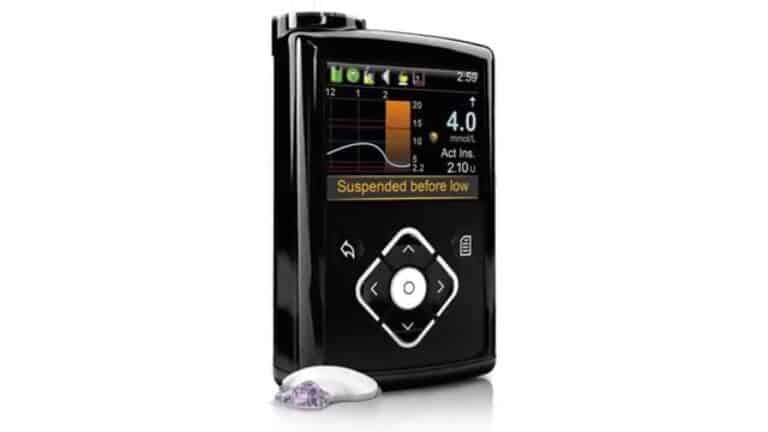Diabetic Retinopathy – Everything You Need to Know

Diabetic retinopathy is a common and serious complication of diabetes that affects the blood vessels in the retina—the light-sensitive tissue at the back of the eye. This condition can develop silently over many years and, if left untreated, may lead to permanent vision loss. However, when diagnosed early and treated properly, the progression of diabetic retinopathy can be slowed or even stopped.
Passing through Romania and need a prescription for your chronic treatment?
Contact the Dr. Petrache’s Virtual Clinic for any medical issue you encounter while in Romania. Send an email to: clinica@diabet-si-nutritie.ro
How does retinopathy develop in people with diabetes?
Chronic hyperglycemia damages small blood vessels throughout the body, including those that nourish the retina. Over time, the walls of the retinal capillaries become weak, leak fluid, or become blocked. This leads to ischemic areas, the growth of abnormal new vessels, and eventually, irreversible retinal damage.
Retinopathy is more common and more aggressive in people with:
- Long-standing diabetes (over 5–10 years)
- Poor glycemic control
- High blood pressure
- Dyslipidemia (elevated cholesterol)
- Pregnancy (in women with diabetes)
- Smoking
Types of diabetic retinopathy
There are two main forms of the disease:
1. Non-proliferative diabetic retinopathy (NPDR) – early stage, characterized by:
- Microaneurysms (small balloon-like swellings in blood vessels)
- Retinal hemorrhages
- Hard exudates (fat deposits)
- Macular edema
This form may be asymptomatic but must be monitored closely to prevent progression.
2. Proliferative diabetic retinopathy (PDR) – advanced stage, with the growth of fragile new blood vessels that can bleed into the eye, causing:
- Vitreous hemorrhage
- Retinal detachment
- Neovascular glaucoma
- Severe vision loss
This form requires urgent treatment to preserve vision.
Symptoms of diabetic retinopathy
In the early stages, diabetic retinopathy may not cause any noticeable symptoms. As the disease progresses, symptoms may include:
- Blurred vision
- Spots or floaters in the field of vision
- Difficulty reading or seeing in the dark
- Fluctuating vision
- Sudden vision loss (due to bleeding or retinal detachment)
Any changes in vision in a person with diabetes should be considered a red flag.
Passing through Romania and need a prescription for your chronic treatment?
Contact the Dr. Petrache’s Virtual Clinic for any medical issue you encounter while in Romania. Send an email to: clinica@diabet-si-nutritie.ro
How is diabetic retinopathy diagnosed?
Diagnosis is made by an ophthalmologist through:
- Fundoscopy: direct examination of the retina using an ophthalmoscope
- Retinal photography: allows documentation and monitoring of changes over time
- Optical Coherence Tomography (OCT): detects macular edema
- Fluorescein angiography: reveals ischemic areas and abnormal vessels
Annual eye exams are essential for all patients with diabetes, even in the absence of symptoms.
How often should diabetic patients have eye exams?
General recommendations include:
- At diagnosis: for all patients with type 2 diabetes, and after 5 years for those with type 1 diabetes
- Annually: if there are no signs of retinopathy
- Every 3–6 months: if retinal changes or macular edema are present
- More frequently: during pregnancy or in cases of rapid disease progression
Exams should be performed by an ophthalmologist with experience in diabetic retinopathy, ideally with access to modern diagnostic tools.
Treatment of diabetic retinopathy
Treatment depends on the stage of the disease:
- Optimal metabolic control: the foundation of care. Tight glucose, blood pressure, and lipid management slows disease progression.
- Laser photocoagulation: seals leaking or abnormal vessels and prevents bleeding.
- Intravitreal anti-VEGF injections: reduce macular edema and inhibit new vessel growth.
- Vitrectomy: a surgical procedure used in cases of persistent bleeding or retinal detachment.
The earlier treatment begins, the greater the chances of preserving vision.
Can diabetic retinopathy be prevented?
In many cases, yes. Prevention strategies include:
- Strict glycemic control (keeping HbA1c below 7%)
- Careful monitoring of blood pressure and blood lipids
- Quitting smoking
- Healthy eating and regular physical activity
- Regular ophthalmologic checkups
Patient education and collaboration between the diabetologist and the ophthalmologist are key to preventing complications.
Passing through Romania and need a prescription for your chronic treatment?
Contact the Dr. Petrache’s Virtual Clinic for any medical issue you encounter while in Romania. Send an email to: clinica@diabet-si-nutritie.ro
Conclusion: Retinopathy is treatable if detected early
Diabetic retinopathy is one of the leading causes of preventable blindness. Although it may develop without symptoms for a long time, regular eye exams and good metabolic control can prevent vision loss. Don’t delay investigations—see a specialist regularly.
Follow us on:
- FaceBook: Diabetes & Nutrition;
- YouTube: Diabetes Facts.
















